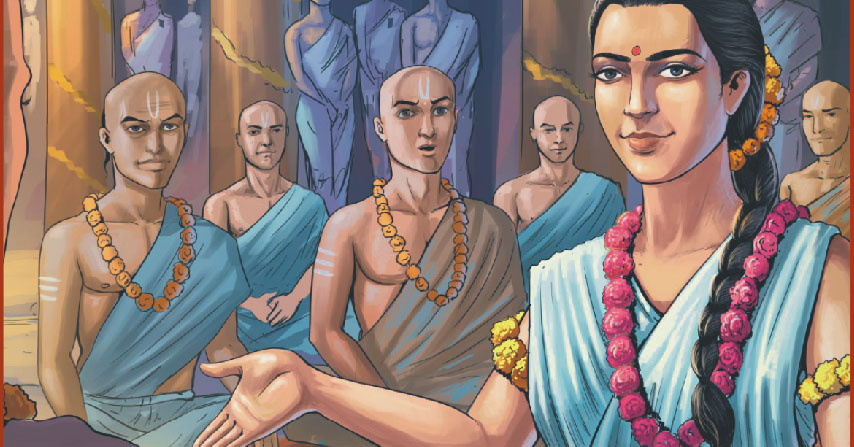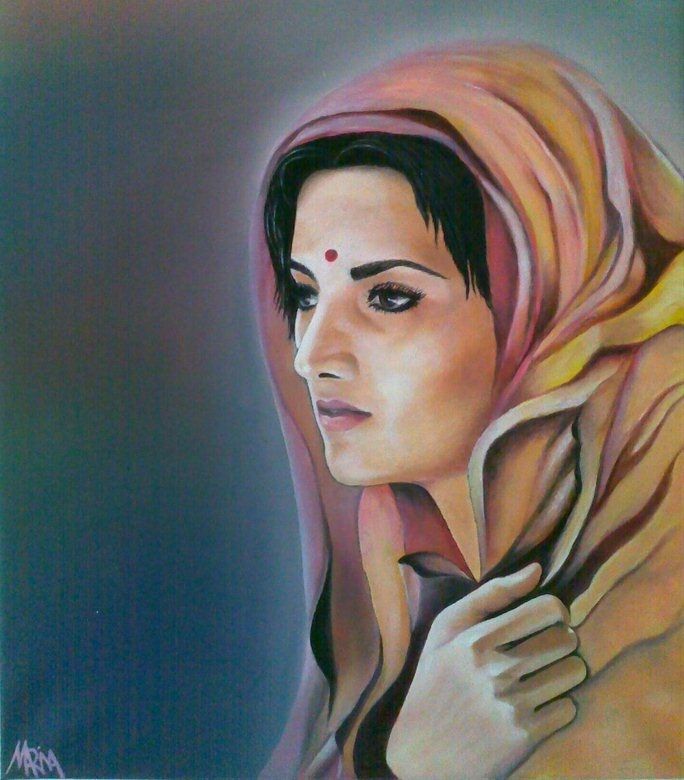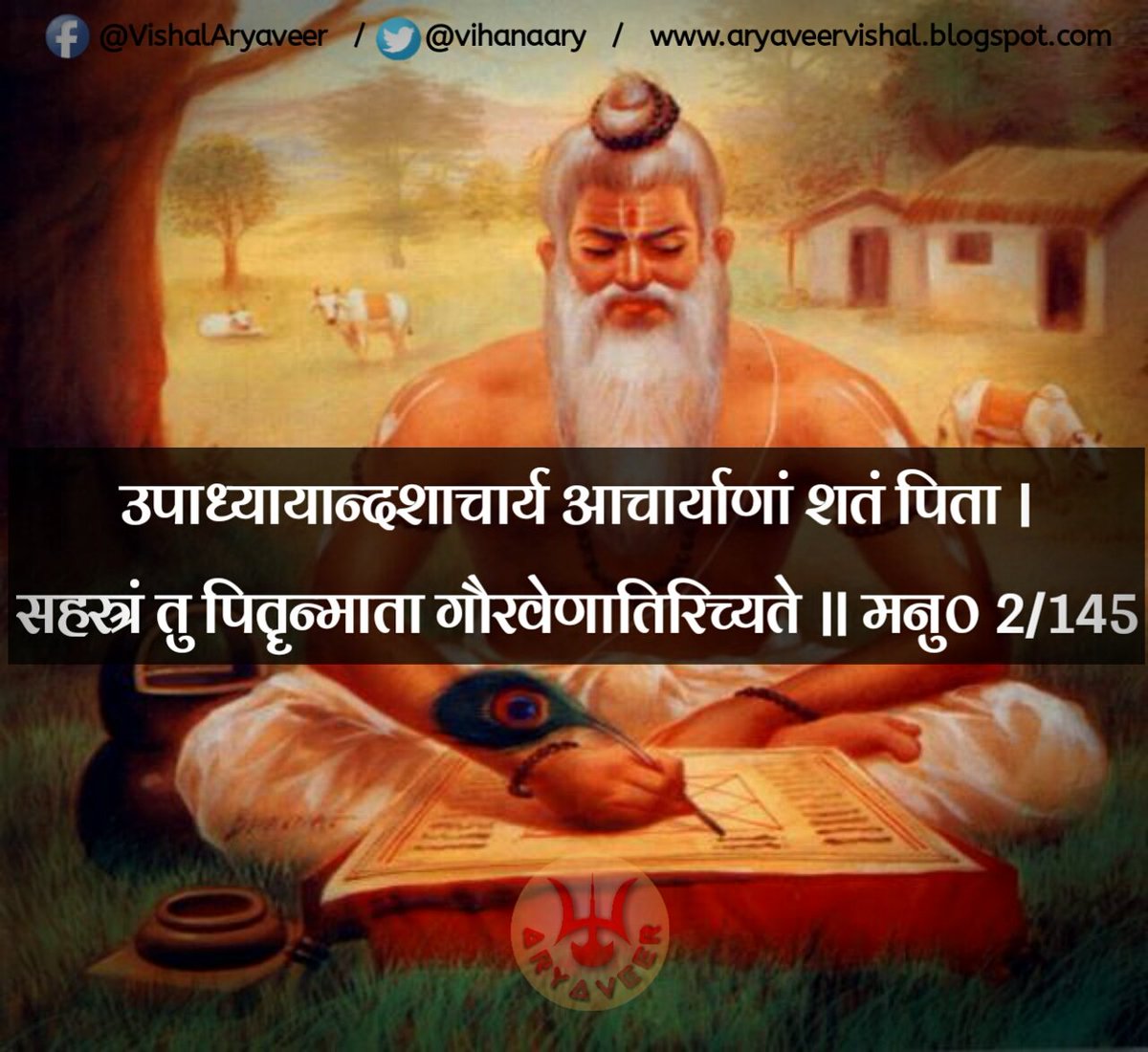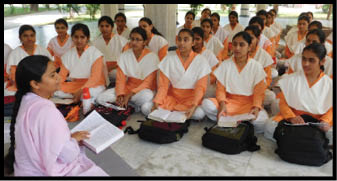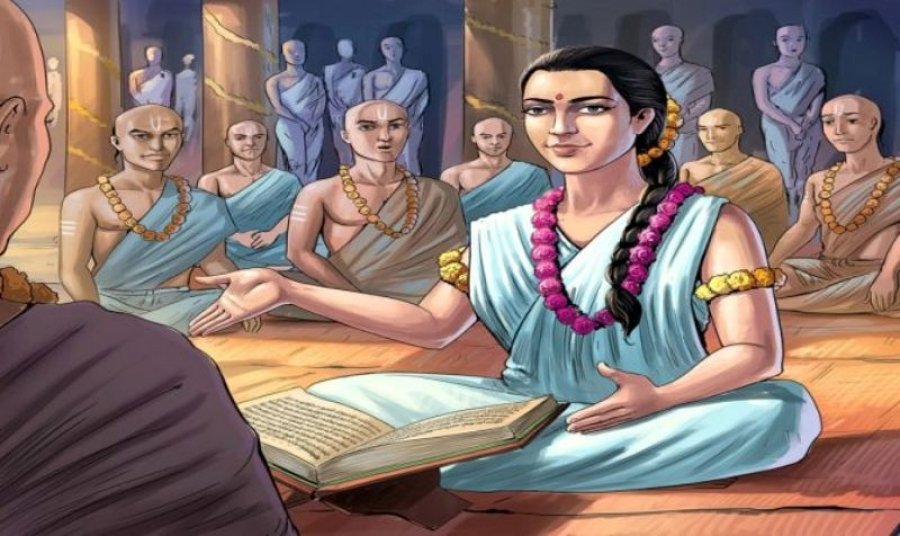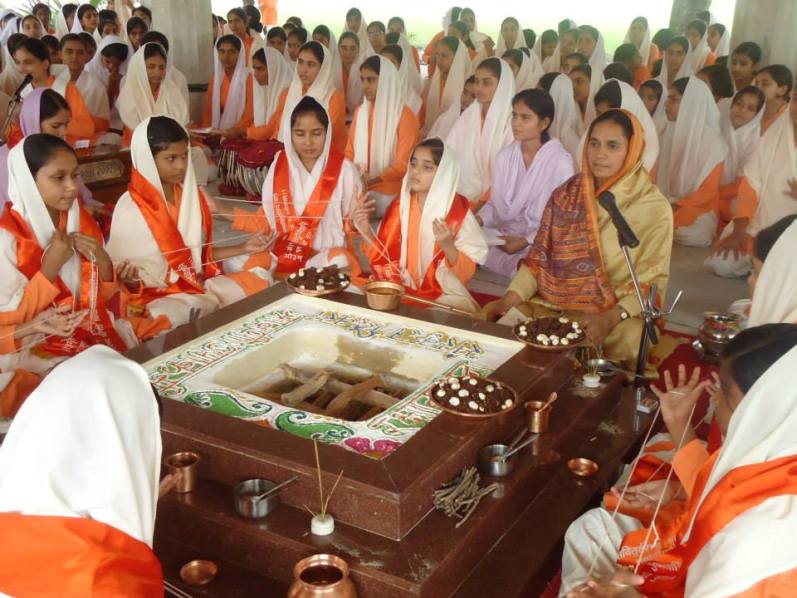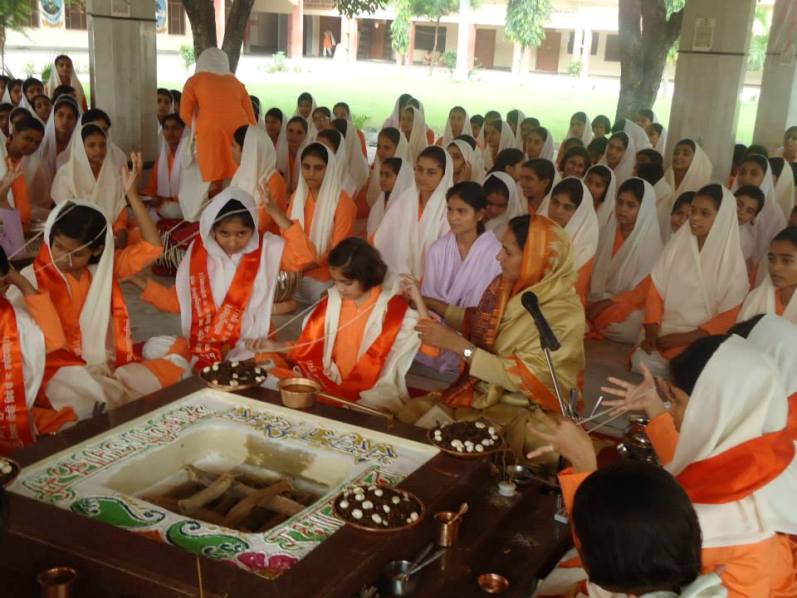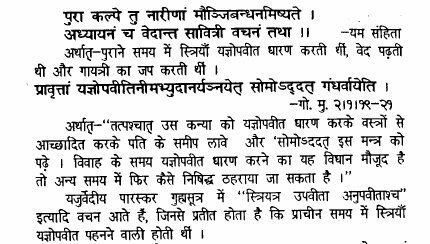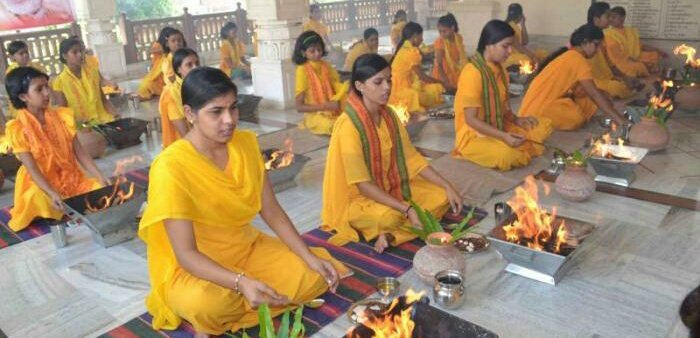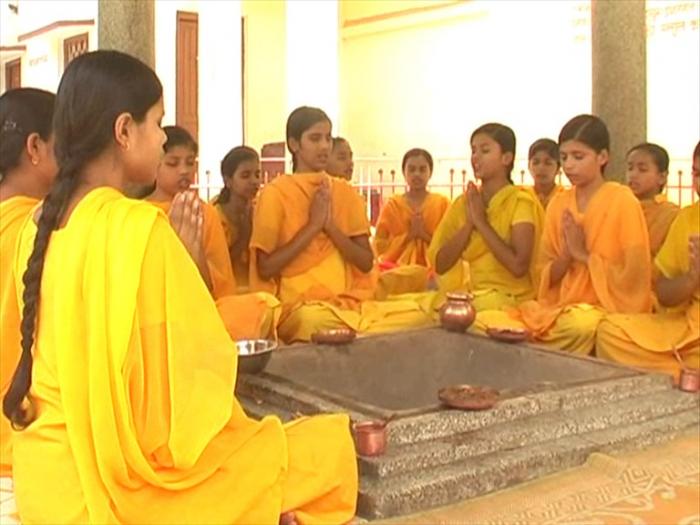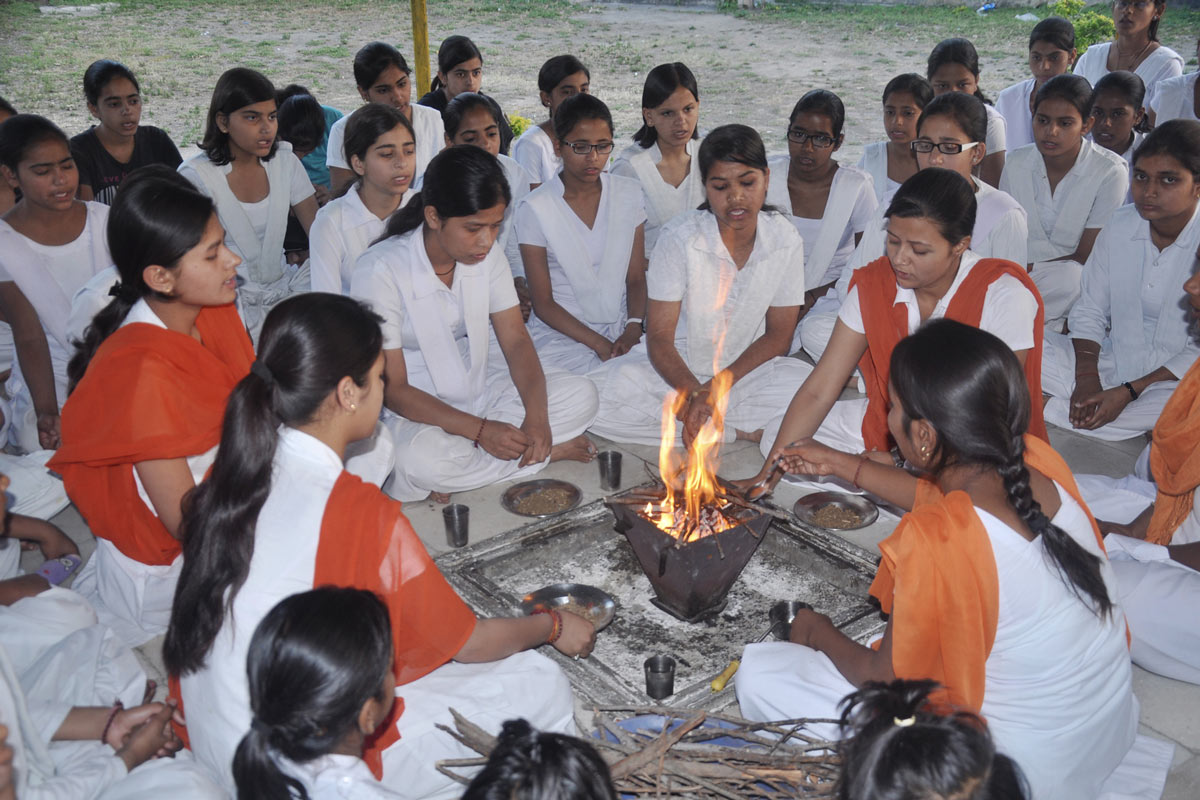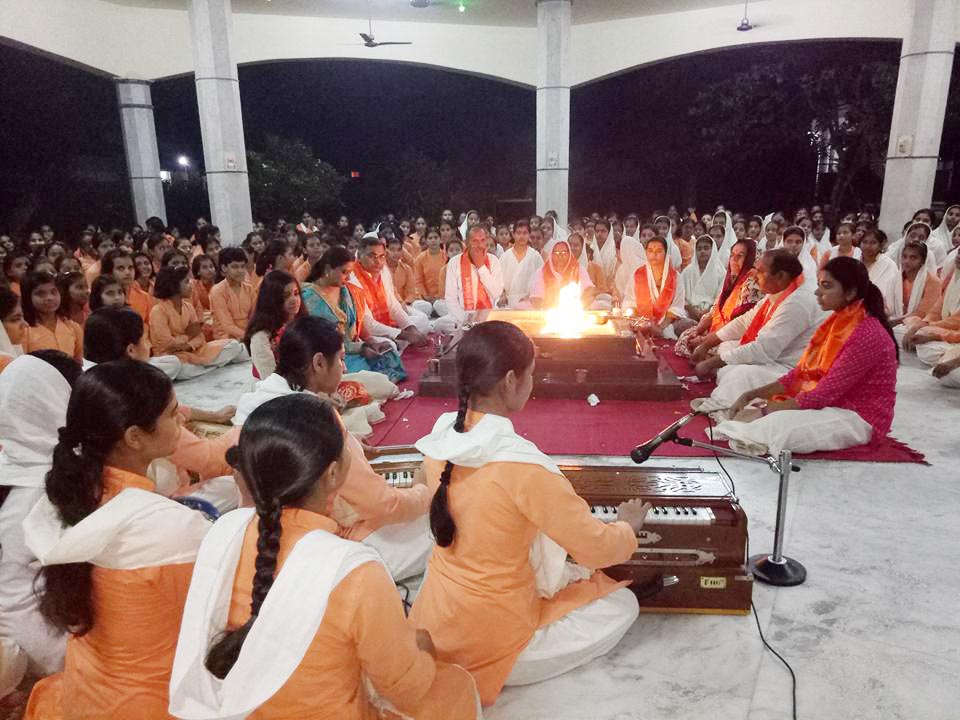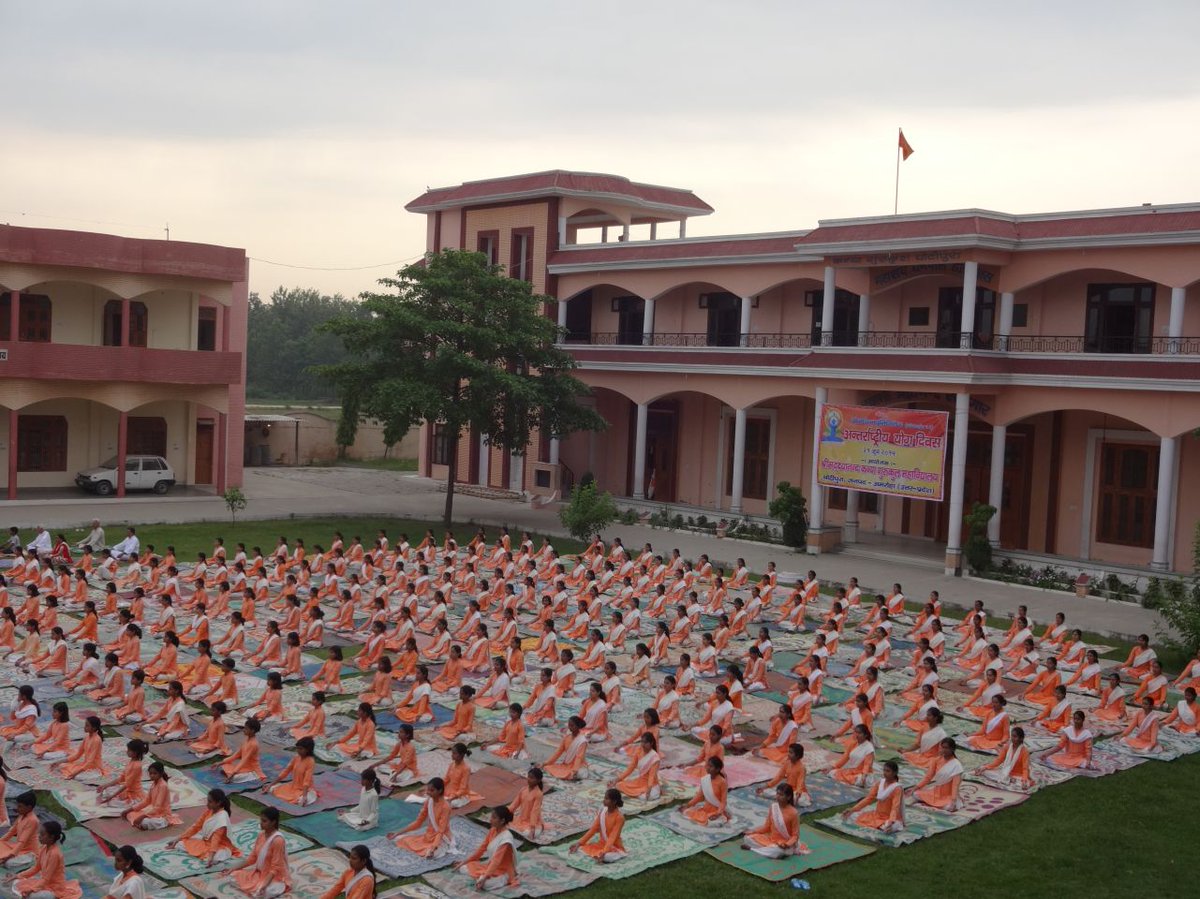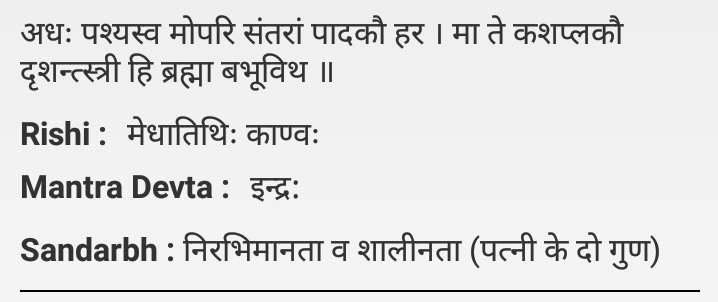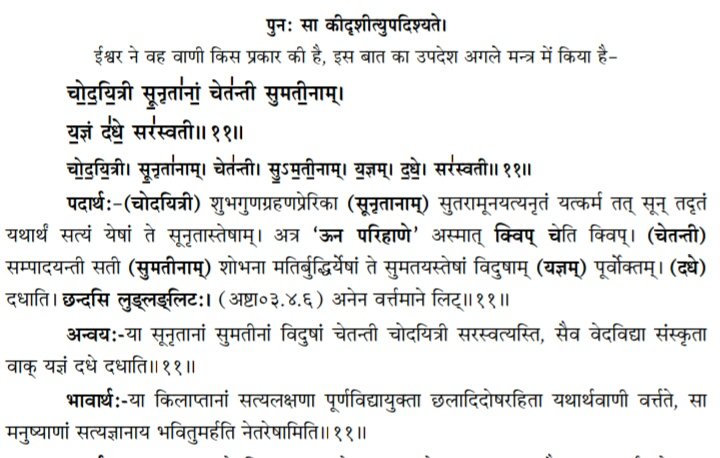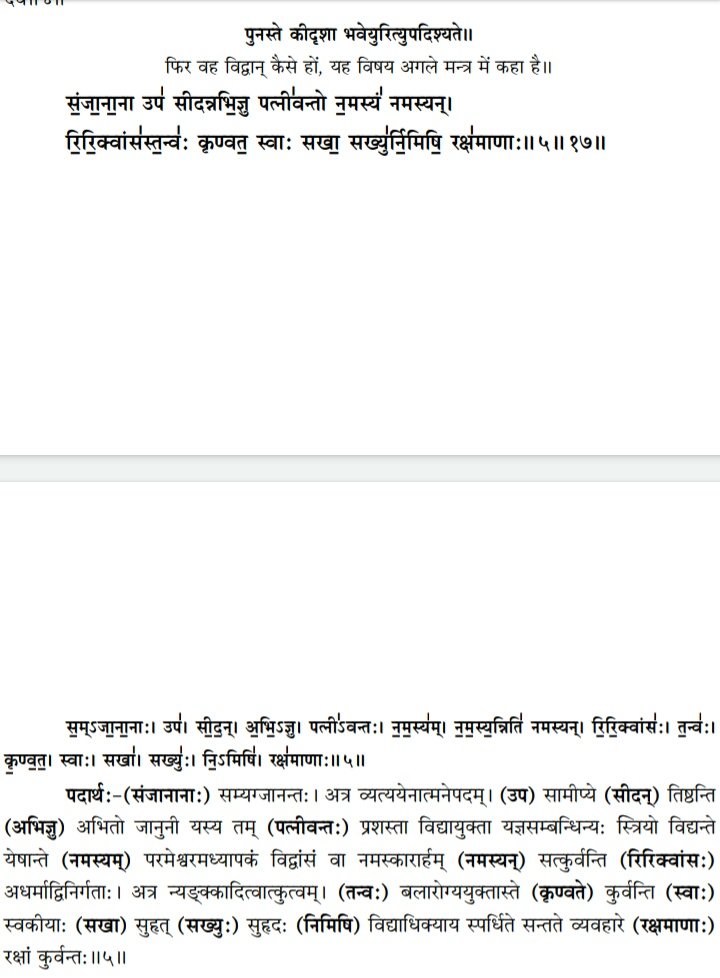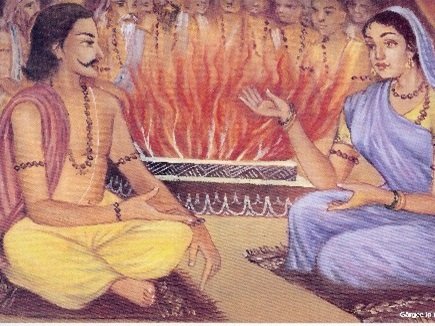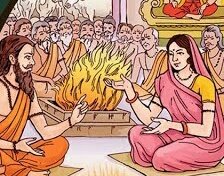॥ VEDIC WOMEN ॥
Vedic tradition recognises women as more relevant for sustaining the society. Vedas talk about her rare virtues.
RigVeda(6.61.4) says ~ & #39;प्र णो देवी सरस्वती वाजेभिर्वाजिनीवती। धीनामवित्र्यवतु॥ (ऋषि-भरद्वाजो बार्हस्पत्यः) i.e
1/n
Vedic tradition recognises women as more relevant for sustaining the society. Vedas talk about her rare virtues.
RigVeda(6.61.4) says ~ & #39;प्र णो देवी सरस्वती वाजेभिर्वाजिनीवती। धीनामवित्र्यवतु॥ (ऋषि-भरद्वाजो बार्हस्पत्यः) i.e
1/n
i.e, The goddess of learning(Saraswati), endowed with divine virtues, powerful and protector of intelligence, may protect us by bestowing strength on us. Atharvaveda describes her as the symbol of Dharma or truthful behaviour.
2/n
2/n
महर्षि मनु says in मनुस्मृति (2.145)
that the rank of one Acharya (principal) is equal to 10 ordinary teachers, the rank of one father is equal to that of 100 acharyas. The rank of one mother is equal to that of 1000 fathers.
3/n
that the rank of one Acharya (principal) is equal to 10 ordinary teachers, the rank of one father is equal to that of 100 acharyas. The rank of one mother is equal to that of 1000 fathers.
3/n
Why did महर्षि मनु give such a high position to mother who is a woman?
Just because a learned mother inculcates in her children good संस्कार and education as a प्रथम गुरू.
These thoughts go deep into the mind of the child forming his attitude and values of the later age.
4/n
Just because a learned mother inculcates in her children good संस्कार and education as a प्रथम गुरू.
These thoughts go deep into the mind of the child forming his attitude and values of the later age.
4/n
Manusmriti(3-56) also declares~
यत्र नार्यस्तु पूज्यन्ते रमन्ते तत्र देवताः ।
यत्रैतास्तु न पूज्यन्ते सर्वास्तत्राफलाः क्रियाः॥
i.e., Wherever women are honoured, there is heaven(abode of Devas) and where they are not, there all activities fail.
5/n
यत्र नार्यस्तु पूज्यन्ते रमन्ते तत्र देवताः ।
यत्रैतास्तु न पूज्यन्ते सर्वास्तत्राफलाः क्रियाः॥
i.e., Wherever women are honoured, there is heaven(abode of Devas) and where they are not, there all activities fail.
5/n
RIGHT OF WOMEN TO WEAR YAJYOPAVIT
Upanayan or Yajyopavit Sanskar signifies that hereafter the boy or girl shall start the pursuit of Vedic knowledge and in modern terms shall begin his/her formal education. Opposed to the Vedic commandments,
6/n
Upanayan or Yajyopavit Sanskar signifies that hereafter the boy or girl shall start the pursuit of Vedic knowledge and in modern terms shall begin his/her formal education. Opposed to the Vedic commandments,
6/n
girls were denied the right to wear Yajnopavit in the pauranic period and the tradition still continues. However, Vedic culture provides the right to accept Yajyopavitirrespective of gender because right to pursue knowledge and learning is given both to men and women.
7/n
7/n
Gobhilleya Grihyasutra 2-1-19 says
"PRAAVRITAAM YAJJOPAVEETINEEM ABHYUDAANAYAN JAPET SOMO-ADADAT GANDHARVAAY ITI"
i.e. the bride were required to wear yajyopavit During ancient times Upanayan Sanskar was performed on the girls and they used to study Vedic texts as is evident
8/n
"PRAAVRITAAM YAJJOPAVEETINEEM ABHYUDAANAYAN JAPET SOMO-ADADAT GANDHARVAAY ITI"
i.e. the bride were required to wear yajyopavit During ancient times Upanayan Sanskar was performed on the girls and they used to study Vedic texts as is evident
8/n
from the Smriti Chandrika and Sanskar Prakash
“पुराकल्पे हि नारीणां मौञ्जीबन्धनमिष्यते| अध्यापनं च वेदानां सावित्रीवाचनं तथा ||”
As per Prasar Sanhita and Smriti Chandrika, there are two kinds of women - those who are brahmvaadinees and the other sadyovadhu.
9/n
“पुराकल्पे हि नारीणां मौञ्जीबन्धनमिष्यते| अध्यापनं च वेदानां सावित्रीवाचनं तथा ||”
As per Prasar Sanhita and Smriti Chandrika, there are two kinds of women - those who are brahmvaadinees and the other sadyovadhu.
9/n
Brahmvaadinees whose ritual of upanayan has been carried out are required to perform Yajna, study the Vedas and those who conduct themselves in charity(bhiksha vritti). While Sadyovadvah women who used to get married early were required to go through Upanayan ceremony before
10/n
10/n
getting married.
Baanbhatt the famous poet of 7th century writes in Kadambari about Mahashweta that her body is pure because of wearing a Brahm Sutra BRAHM SUTREN PAVITREEKRIT KAAYAAM.
11/n
Baanbhatt the famous poet of 7th century writes in Kadambari about Mahashweta that her body is pure because of wearing a Brahm Sutra BRAHM SUTREN PAVITREEKRIT KAAYAAM.
11/n
Yajyopavit is also called by various other names such as Brahmsutra, mounjee-bandhan, upanayan, etc. (Ref.Sanskar Chandrika by Prof.Satyavrat Sidhantalankar, Kanyopayan Vidhi by Maharani Shankar Sharma )
12/n
12/n
RIGHT TO PERFORM YAJNA
Maharishi Manu who regarded Vedas as of axiomatic authority was a great advocate of higher education for women nd for performance of Dharmic rites(including yajna) by them. Further, the view of orthodoxy that women r not allowed to perform Yajna.....
13/n
Maharishi Manu who regarded Vedas as of axiomatic authority was a great advocate of higher education for women nd for performance of Dharmic rites(including yajna) by them. Further, the view of orthodoxy that women r not allowed to perform Yajna.....
13/n
alone is fallacious. It is pertinent to point out here that unmarried female students(brahmacharinies seeking knowledge) who pursued education in the Gurukuls during Vedic times like their male counterparts were compulsorily required to perform Yajna...
14/n
14/n
(after wearing in Yajyopavitam-holy thread) as a part of their daily routine.
Atharvaveda in Brahmacharya Sukta (11.5.18) says “A girl after having completed her studies and after having fulfilled her pledge of celebacy finds a youth as a suitable match for her.”
15/n
Atharvaveda in Brahmacharya Sukta (11.5.18) says “A girl after having completed her studies and after having fulfilled her pledge of celebacy finds a youth as a suitable match for her.”
15/n
Today also you can find a large number of women students studying in unorthodox Gurukuls especially run by Arya Samaj where they not only perform Yajna themselves but also act as a Brahma of the Yajna leading the ritual.
16/n
16/n
Rig Veda 8.33.19 says— स्त्री हि ब्रह्मा बभूविथ ॥ ).
However, it is unfortunate that amongst certain sections even in this age women are not allowed to recite Gayatri Mantra and they are denied yajnopavita and the study of Vedas.
17/n
However, it is unfortunate that amongst certain sections even in this age women are not allowed to recite Gayatri Mantra and they are denied yajnopavita and the study of Vedas.
17/n
PERFORMANCE OF YAJNA BY WOMEN FOR GOOD PROGENY AND IMPORTANCE OF ANUSHTHANA
धार्मिक education including performance of अग्निहोत्र and other rituals was a part of women& #39;s day to day life.
Rigveda calls upon women to learn this all - यज्ञं दधे सरस्वती ॥ (Rig 1/3/11).
18/n
धार्मिक education including performance of अग्निहोत्र and other rituals was a part of women& #39;s day to day life.
Rigveda calls upon women to learn this all - यज्ञं दधे सरस्वती ॥ (Rig 1/3/11).
18/n
There are certain rituals which are conducted with a wife - & #39;पत्नीवन्तो नमस्यं नमस्यन् ।।& #39; (Rig Veda 1/72/5).
The Shatapatha Brahman calls her "Yosa Vai Saraswati" and invites wise women for Yajna(1/5/9).
19/n
The Shatapatha Brahman calls her "Yosa Vai Saraswati" and invites wise women for Yajna(1/5/9).
19/n
Even for getting a good progeny the importance of Yajna was realised and Anushthana is prescribed by Shatpatha Brahmana (1/9/2/1-35).
Basically, Yajna is a spiritual activity and a divine resolve. The spirit of Yajna lies in performing good deeds and in surrendering to....
20/n
Basically, Yajna is a spiritual activity and a divine resolve. The spirit of Yajna lies in performing good deeds and in surrendering to....
20/n
Ishwara whatever a person has.
It is a step towards reaching the higher levels of Yoga.
According to श्रीकृष्ण Life is to be treated as a Yajna or a sacrifice and in गीता(3-9), योगीराज कृष्ण tells Arjuna, to perform his duty without any attachment and in the spirit of Yajna.
21/n
It is a step towards reaching the higher levels of Yoga.
According to श्रीकृष्ण Life is to be treated as a Yajna or a sacrifice and in गीता(3-9), योगीराज कृष्ण tells Arjuna, to perform his duty without any attachment and in the spirit of Yajna.
21/n
WOMEN RISHIKAS IN VEDIC TRADITION
Among various rishies who were seers of the secrets of the Vedas, there were many rishikas(women seers) whose names appear in the Rig Veda as indicated in the following table:
22/n
Among various rishies who were seers of the secrets of the Vedas, there were many rishikas(women seers) whose names appear in the Rig Veda as indicated in the following table:
22/n
Number/Name/Mandal/Sukta/Richa
Romsha 1/26/7/2
Lopamudra 1/179/1-6/3
Vishwavara 5/28/1-6/4
Shashwati 8/1/38/5
Apala 8/91/1-7/6
Yami 10/10/1,3,5,7,11,13/7
Ghosha 10/39-40/1-18/8
Surya 10/85/1-47/9
Indrani 10/86/1-23/10
Urvashi 10/95/2,4,5,7,11,13,15,16,18/11
23/n
Romsha 1/26/7/2
Lopamudra 1/179/1-6/3
Vishwavara 5/28/1-6/4
Shashwati 8/1/38/5
Apala 8/91/1-7/6
Yami 10/10/1,3,5,7,11,13/7
Ghosha 10/39-40/1-18/8
Surya 10/85/1-47/9
Indrani 10/86/1-23/10
Urvashi 10/95/2,4,5,7,11,13,15,16,18/11
23/n
Dakshina 10/107/1-11/12
Sarma 10/108/2,4,6,8,10,11/13
Juhu 10/109/1-7/14
Vag 10/125/1-8/15
Ratri 10/127/1-78/16
Godha 10/134/7/17
Indrani 10/145/1-6/18
Shradha 10/151/1-5/19
Indramatra 10/153/1-5/20
Shachi 10/159/1-6/21
Sapragi 10/189/1-3
24/n
Sarma 10/108/2,4,6,8,10,11/13
Juhu 10/109/1-7/14
Vag 10/125/1-8/15
Ratri 10/127/1-78/16
Godha 10/134/7/17
Indrani 10/145/1-6/18
Shradha 10/151/1-5/19
Indramatra 10/153/1-5/20
Shachi 10/159/1-6/21
Sapragi 10/189/1-3
24/n
Gargi and Maitreyi were distinguished Vedic scholars who challenged Yajnavalkya, the great sage of the Upanishadic age in a debate conducted in the court of King Janaka.
With so much of irrefutable evidence, there is no veracity in the claim that women did not enjoy....
25/n
With so much of irrefutable evidence, there is no veracity in the claim that women did not enjoy....
25/n
.....the freedom of education in ancient bharat.
I shall conclude with Atharva Veda( 14.1.68) which while addressing a newly wed women says "Let your homes be full of Vedic knowledge. Let there be Vedic study at the beginning, the middle and the end of your days& #39;s work".
26/n
I shall conclude with Atharva Veda( 14.1.68) which while addressing a newly wed women says "Let your homes be full of Vedic knowledge. Let there be Vedic study at the beginning, the middle and the end of your days& #39;s work".
26/n

 Read on Twitter
Read on Twitter